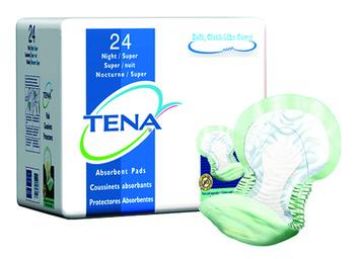
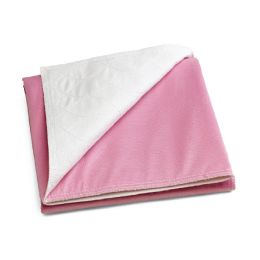
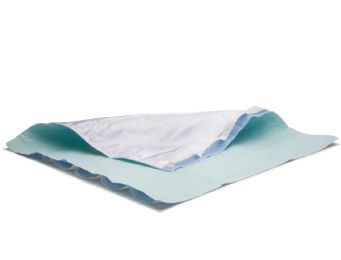
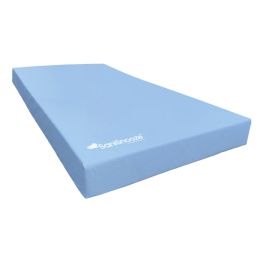

.jpg&newheight=260&quality=80)

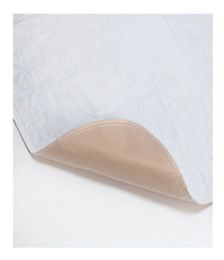

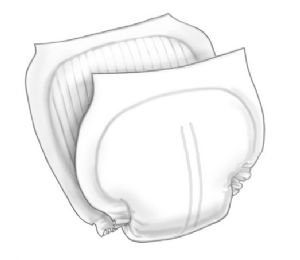
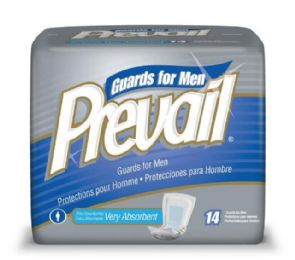
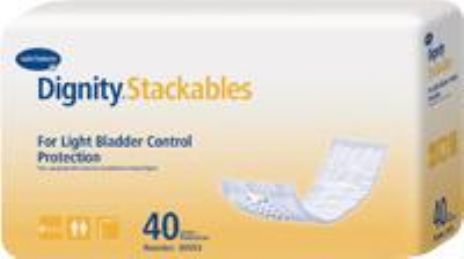
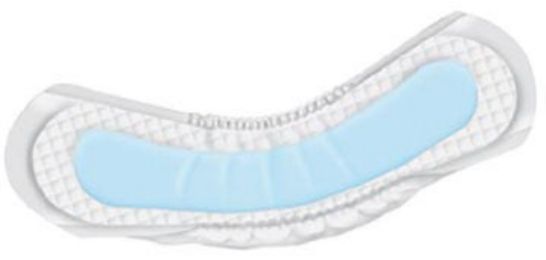
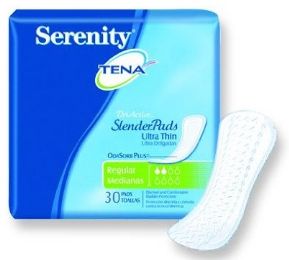
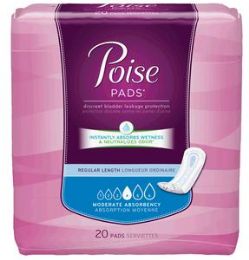

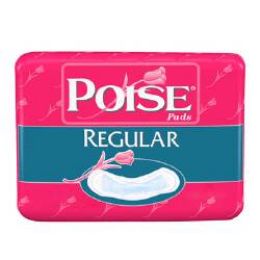
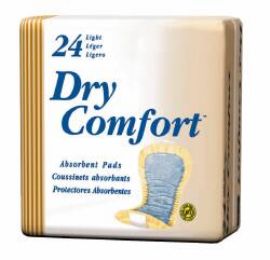
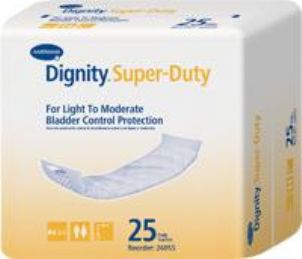
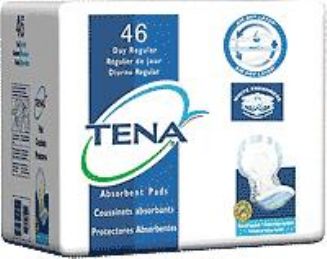
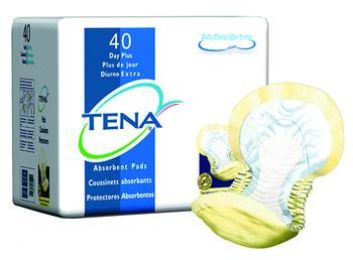
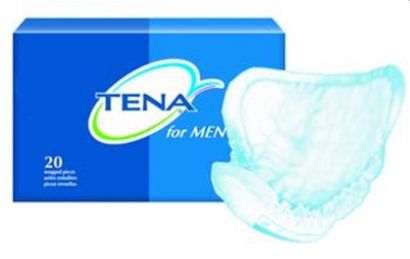
What are Incontinence Pads?
Typically formulated with an absorbent fabric that can be washed and re-used or with highly absorbent paper that is disposable, an incontinence pad may be designed to fit inside an undergarment, or may be larger in size to be placed on a bed or chair. They are usually constructed in a multi-layered format to offer exceptional absorbency, and may include specialized antibacterial properties to reduce the risk of infection and to provide better odor control.
Incontinence pads are generally offered in absorbency ranges from light to heavy, specifying the working capacity absorbency rate of each pad when it is in use. Whether your own incontinence issue is mild, moderate or severe, there are many pad choices to accommodate your unique requirements.
Incontinence pads that fit inside underwear and other undergarments are most often designed to be disposable. Adhesive strips keep them in proper position, with differing designs for use by men or women. This low profile incontinence solution offers protection that is not bulky or visible beneath clothing. Wearable incontinence pads can absorb and trap 8 or more ounces of urine, wicking it away from direct contact with the skin. Most pads additionally offer bacterial and fungal protection, which also helps to control odors and infection.
Incontinence underpads, also known as bed pads, are larger highly absorbent pads that help protect surfaces that the incontinent individual may use, such as wheelchairs, chairs, beds and other furniture. They are usually created with a moisture barrier on the bottom side along with an absorbent layer on the top side. Underpads can be manufactured to be disposable, or some designs are washable and reusable. They protect furniture from accidental urinary leaks, and many underpads highlight antibacterial and antifungal properties for infection and odor control. They also often feature adhesive strips and other design highlights to keep the pad firmly in proper position.
Male guard pads are specifically designed to fit the male anatomy, with an elongated cup-like shape at the bottom that is elasticized to comfortably contain and cradle male genitalia. Male incontinence pads are generally very good at handling even the heaviest urinary flow, or can be used for mild or moderate problems as well.
Female incontinence pads offer a similar design to menstrual pads, but are constructed very differently as far as absorbency technology. While menstrual pads are designed for a slower, heavier liquid, female incontinence pads are much better at absorbing urine. They generally feature a form-fitting design and adhesive strips to fully conform to and enclose the female genitalia, eliminating the risk of leakage. Absorbency rates can range from very light to very heavy, depending on the particular product.
Absorbency booster pads are specially-designed incontinence pads that are better suited for use inside of an adult diaper or other protective incontinence undergarments to boost the absorbency rate of these garments. Booster pads are often used for very heavy urinary flow, as an extra layer of protection against urinary leakage. While they may not include moisture-proof backing and elastic like other incontinence pads, they do typically offer secured absorbency of higher amounts of urine, even as much as 30 to 40 ounces.
How do Incontinence Pads Help Maintain Good Health?
While comfortable wearability and discretion will always be important to an incontinence pad user, what is even more important is the pad’s ability to wick moisture away from the body and to keep odors minimized. Keeping the perineal and genital areas dry is paramount to reducing the risk of infection, while keeping urine odors away mitigates possible embarrassment. Both issues can greatly affect the individual’s quality of life physically and mentally.
If urine is constantly in contact with the skin, it will affect the skin’s integrity and lead to the breakdown of healthy skin. Maceration, or over-exposure to moisture makes the skin extremely fragile. This increases the risks for further damage caused by pressure, shear and friction, with even gentle and slight rubbing against bedding or washcloths increasing the risk of injury. Another common health problem caused by incontinence is incontinence dermatitis, or diaper rash. This condition is caused from too much moisture in contact with the skin, along with the chemicals commonly found in urine.
One of the most caustic chemicals found in urine is ammonia. This chemical increases the skin’s pH, leading to irritation, while it also feeds bacteria, contributing to harmful microbial reproduction. Bacterial and fungal infections are another common concern for incontinent individuals. The warm and damp environment created by urine in contact with skin makes an ideal breeding ground for pathogenic fungi.
Types of Incontinence
Urinary incontinence is a broad term to refer to the inability to control the bladder and urinary flow, a very frustrating problem that affects more than 200 million adults around the world. While it is not a disease in itself, nor a problem that we all should accept as we age, it is broken down into varying levels of severity:
Urge Incontinence is described by a sudden urge to urinate, with an overactive bladder as a possible root cause. This includes those times when even listening to the sound of water can trigger the urge to suddenly release urine.
Stress Incontinence happens while engaging in some kind of physical activity that might put pressure on the bladder. This may include activities like running, or more simple daily activities like laughing, coughing or sneezing. This is the most common type of urinary incontinence, along with urge incontinence.
Functional Incontinence often occurs in individuals who have mobility limitations or disabilities, simply because they cannot make it to a bathroom in time.
Overflow Incontinence happens when individuals let their bladders get too full, leading to natural leaks as the bladder can only hold so much liquid.
Mixed Incontinence translates to an individual suffering from more than one specific type of urinary incontinence. Most often this appears as a combined stress and urge incontinence issue.
More Facts About Incontinence
There are a number of reasons that an individual may suffer from urinary incontinence. It is important to reiterate that incontinence is not a disease in itself, but always a symptom of an underlying health issue. The most common causes for incontinence include pregnancy/giving birth, prostate surgery/prostate gland problems, urinary tract infections (UTIs), uterine prolapse, menopause, weakened pelvic floor muscles, diabetes, spinal cord injuries, constipation, lack of mobility and the ingestion of certain beverages, foods and medications.
One of the most surprising facts about incontinence is that is it NOT a normal part of aging. Just as many of us try to keep the rest of our body strengthened, pelvic floor muscles can also be strengthened and put into better shape, no matter what age we are. While pregnancy is certainly a common factor in causing incontinence during and immediately following childbirth, it is often a temporary condition that can be reversed by doing Kegel exercises. Men can often reverse their own incontinence issues by doing these kinds of exercises that strengthen the pelvic floor muscles as well. While prostate surgery can cause temporary incontinence, Kegel exercises and other medical treatments can help.
Another surprising fact for many incontinent individuals to learn is that drinking less liquid will actually make them have to urinate more often. Why? Because ingesting less liquid makes the urine more concentrated which causes the bladder to become irritated. An irritated bladder leads to more frequent urination. Experts recommend 6 to 8 glasses of water a day to help keep the urinary system functioning at peak levels for normal urination and detoxification.
Rehabmart is pleased to offer a diverse selection of superior quality incontinence pads from such respected manufacturers and brands like Tranquility, Independence Medical, PharMed Co., McKesson Medical Surgical, Snug Seat, Poise Pads, Prevail Guards, ATTENDS, Tena, Dignity and Dry Comfort.
Hulet Smith, OT
Rehabmart Co-Founder & CEO
ck